Think inside the box: How accessibility shapes digital product design
How constraints ignite creativity, spark innovation, and why accessibility is a uniquely effective constraint everyone should embrace.
“Design depends largely on constraints.” — Charles Eames
Access to digital technologies is a fundamental human right¹ and legal obligation².
In an ideal world, there would be no need for more justification to care about and prioritize accessibility than enabling around 16% of the global population³ to live independently and with dignity in our increasingly digital society.
However, since we’re far from living in a perfect world⁴, the case for accessibility needs more than just a noble cause — it requires concrete benefits. Thankfully, there are plenty of these, all well-documented and researched, including:
- Better usability and user experience for everyone, not just those with disabilities⁵
- Improved Search Engine Optimization (SEO)⁶
- Access to a market with $1.9 trillion of annual disposable income⁷
- Positive brand and PR effects⁸
- Promotion of cleaner, more maintainable code⁹
- Minimizing legal risk and liability¹⁰
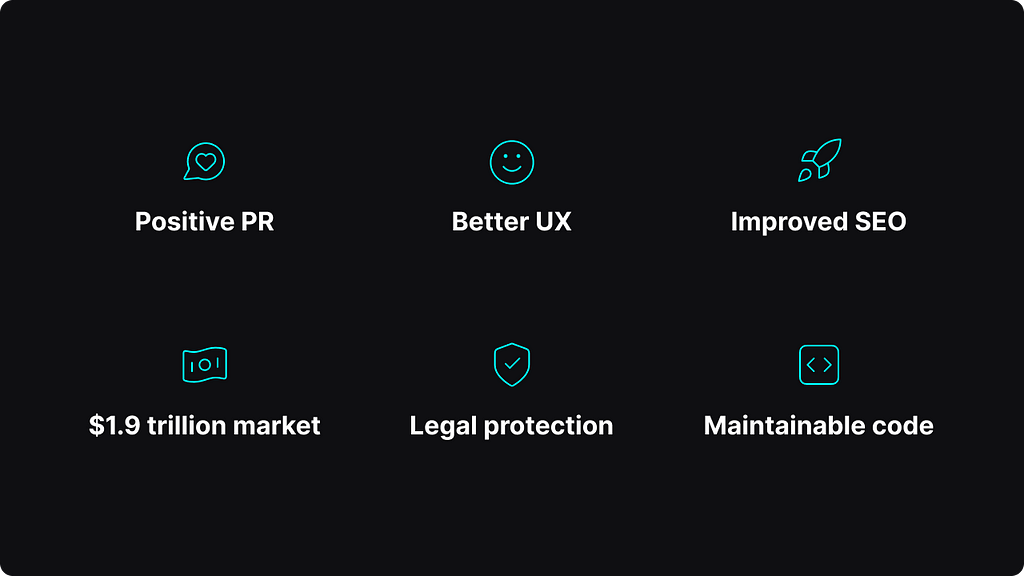
Beyond these benefits, accessibility also introduces a unique creative constraint that can channel focus and stimulate innovation in the product design process. Let’s see how!
Design is creative problem-solving
Designing is a form of creative problem-solving involving identifying challenges, exploring possibilities, and crafting solutions to meet specific objectives. This process, driven by a deep understanding of the target users, relies on collaboration with a diverse team.
Although designing, unlike art, serves primarily a functional purpose, it still employs artistic expression to create visually compelling and emotionally engaging solutions. This overlap often leads to a common misconception that creativity is purely an innate trait. However, this is far from the truth.
“Design is not art. Design is utilitarian; art is not.” — Massimo Vignelli
In reality, creativity can be cultivated by anyone¹¹ given the right conditions and traits:
- A curious mind, open to new experiences and ideas
- Flexibility and a readiness to embrace failure
- A stimulating environment surrounded by supportive individuals
- Discipline, consistent practice, and persistence
- Space for both experimentation and reflection
While creativity is a crucial design component, a reliable, repeatable process is also necessary to predictably create value and solve problems. The details of this process can vary greatly, influenced by many factors like the business domain, the scope of the project, the composition and skills of the team¹², and the degree to which the conditions mentioned above are supported.
However, there’s a universal truth: The design process needs constraints to be genuinely effective and spur innovation.
The creative process needs constraints
While constraints often carry negative connotations, they are, in fact, crucial elements of the creative process. It’s a common belief that eliminating rules and boundaries cultivates an environment where creativity flourishes, leading to a hotbed of innovation.
Yet, research suggests otherwise.
A comprehensive, cross-disciplinary review conducted by Oguz A. Acar¹³ and colleagues examined 145 empirical studies on the impact of constraints on creativity and innovation. Their findings indicate that individuals, teams, and organizations thrive with a healthy dose of limitations. They begin to stifle creativity and innovation only when constraints become overly restrictive.
“… the key to creativity and innovation is not to remove all constraints.”
So why is this? Simply put, there is no focus or challenge when there are no constraints. Either people settle for the first idea that comes to mind, needing more stimulus to think further, or they may find it challenging to get started due to the overwhelming number of possibilities.
These findings confirm what designers have instinctively been doing for a long time. Consider, for example, the self-imposed limits routinely set, such as design sprints or constraints on fidelity in the ideation phase, to help focus and stimulate original thinking.
Let’s explore psychological dynamics to understand better why constraints are helpful.
Blank-page syndrome
Blank-page syndrome, or writer’s block, is a common obstacle where creatives struggle to initiate work due to mental roadblocks or a lack of inspiration. Often resulting from perfectionism, burnout, or a lack of confidence, it frequently boils down to an absence of clear direction or focus. In such situations, a creative constraint provides a necessary compass, acting as a catalyst to jump-start the creative process.
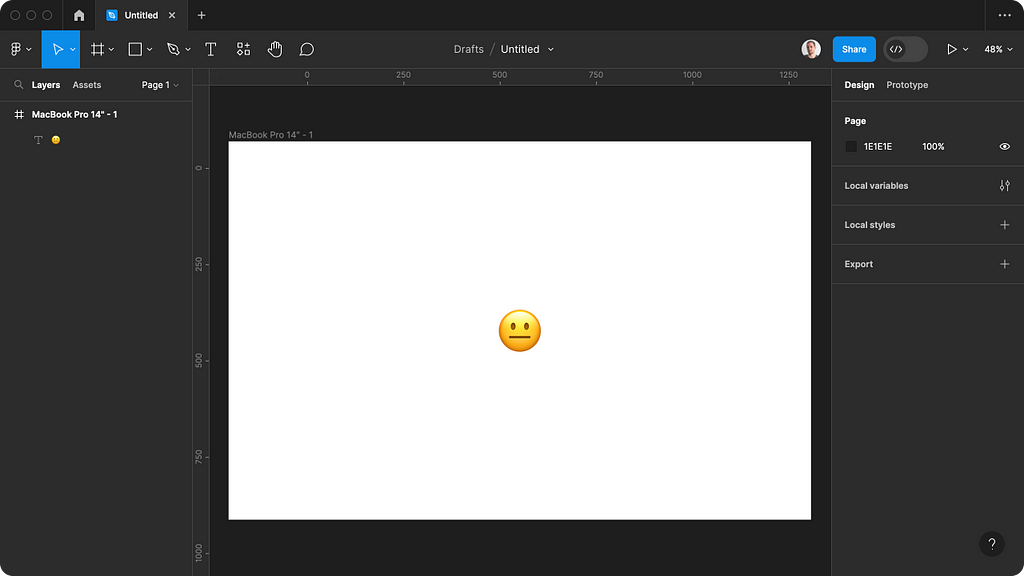
Analysis paralysis
Analysis paralysis is when individuals overthink or over-analyze a situation to the point of becoming immobilized and unable to make a decision or take action. This condition can occur in all facets of life, but designers may be particularly prone to it. The sheer weight of evaluating an overwhelming number of options (such as selecting a color from the available 17 million) can cause a state of deadlock, stalling progress. In such situations, creative constraints serve as a guide, helping narrow options and fostering decision-making, thus breaking the paralysis.
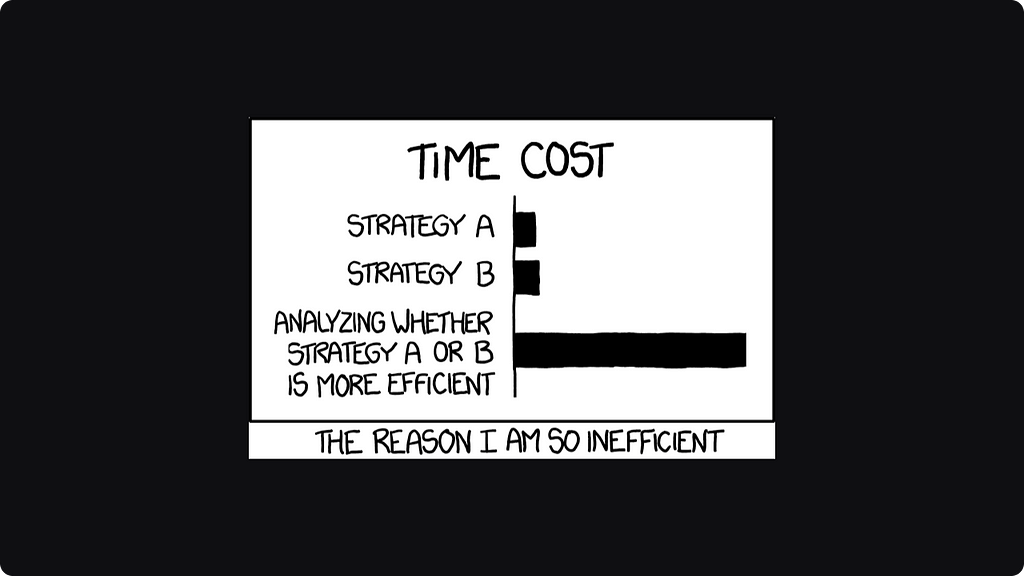
Flow state
Flow state is a condition of total engagement in an activity where creativity thrives. This state is characterized by energized focus, effortless concentration, and profound enjoyment¹⁴. Creative constraints can aid in achieving this state by providing the necessary direction. When reasonable, they can present just the right level of challenge to encourage an individual’s entry into the flow state.
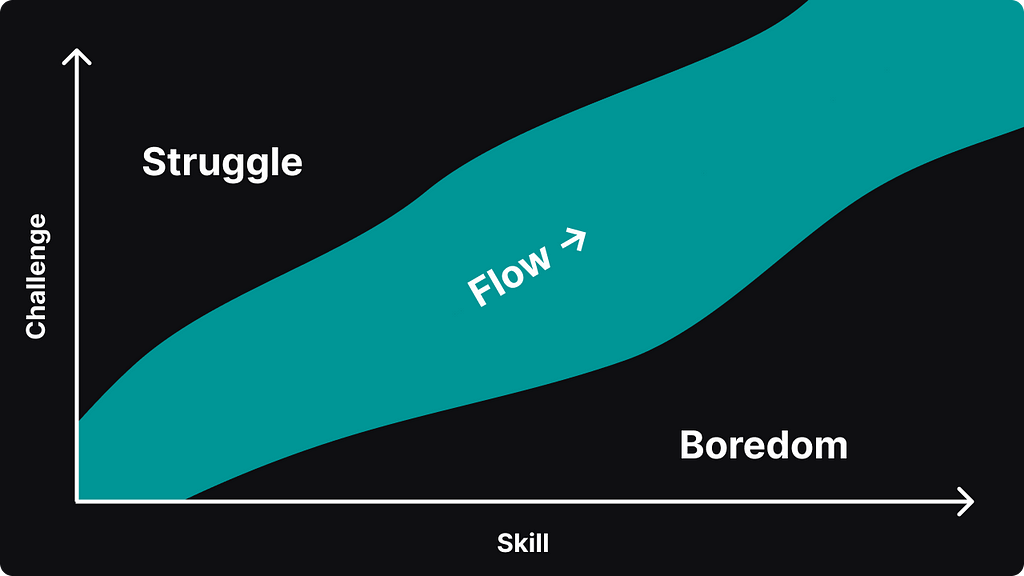
Creative tension
Creativity and innovation call for fresh perspectives, which constraints are uniquely capable of inspiring. They urge us to break away from conventional viewpoints and explore uncharted territories beyond our comfort zones, and fundamentally, they propel us toward innovative solutions. Quite often, it’s within these very constraints that our most brilliant ideas emerge.
“Creativity comes from a conflict of ideas.” — Donatella Versace
Now that we’ve explored the theory, let’s pivot and examine some examples from various creative disciplines. We’ll see how externally imposed or self-imposed constraints have been instrumental in sparking innovation and fostering unique solutions.
Examples from creative fields
OXO Good Grips
The OXO Good Grips line of kitchen tools was borne out of a unique constraint: the founder’s wife, living with arthritis, found traditional kitchen utensils challenging¹⁵. Driven by the necessity for more user-friendly kitchen tools, OXO designed products that enhanced comfort and ease of use not only for individuals with arthritis but for everyone.

Noma
Noma, a renowned restaurant in Denmark, rose to prominence through its rigid constraint of only using locally sourced ingredients. This self-imposed limitation pushed the chefs to creatively utilize what was available in their immediate surroundings, creating unique and innovative dishes.

Nintendo
Nintendo’s creative approach to gaming and hardware design, grounded in the company’s philosophy of “lateral thinking with withered technology,” illustrates the power of constraints.

Their intentional use of mature technology that is less powerful but more reliable and affordable forces innovation to deliver unique, user-friendly games and consoles. This strategy has led to some of history’s most beloved and bestselling games and consoles, from Super Mario and Zelda to the GameBoy and Wii¹⁶.
Matisse
As famed French artist Henri Matisse’s health deteriorated, he used a wheelchair, a constraint that initially seemed too limiting for a painter. However, he transformed this challenge into an opportunity by focusing on a new medium — “painting with scissors” or creating art from paper cutouts.

Stravinsky
Igor Stravinsky, the eminent Russian composer, often composed under self-imposed constraints, whether in traditional Russian folk elements, Classical styles, or the innovative “12-tone” technique.
“The more constraints one imposes, the more one frees oneself of the chains that shackle the spirit.” — Igor Stravinsky
For instance, his groundbreaking ballet The Rite of Spring was marked by strict musical and narrative constraints. It led to revolutionary rhythms and dissonances that caused a riot at its premiere but ultimately transformed 20th-century music.
https://medium.com/media/1c0effa39642df6c42169af1bea69e3a/href
Dr. Seuss
Dr. Seuss, the acclaimed children’s book author, faced a unique constraint when creating some of his most famous works. His publisher challenged him to write a captivating book for early readers using a strictly limited vocabulary, as in the case of The Cat in the Hat, which he wrote with just 236 unique words.
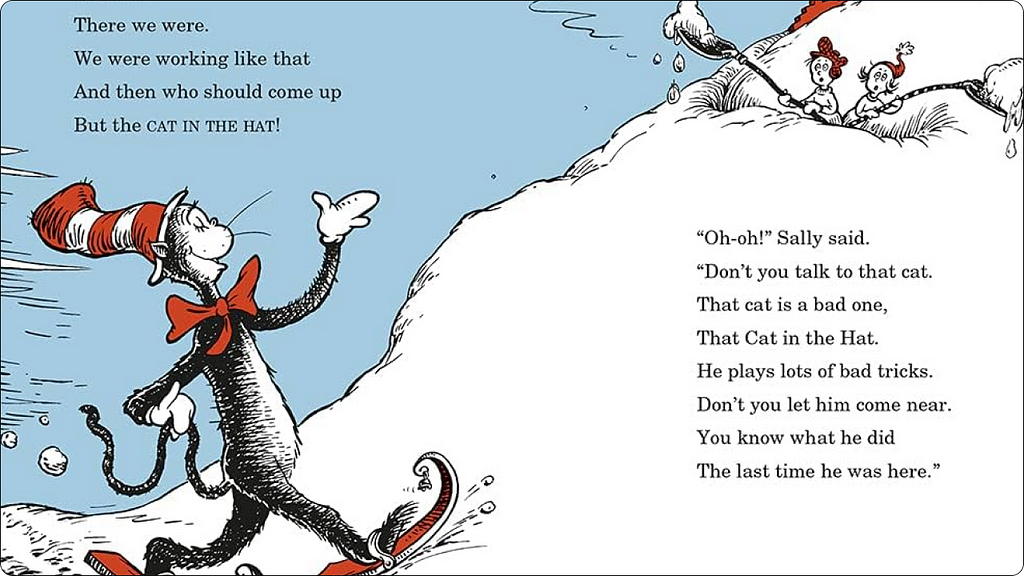
This constraint sparked Dr. Seuss’s ingenuity and led to a distinctive, rhythmical style that made learning to read a delight for children and revolutionized children’s literature.
Jodorowsky’s Dune
A counter-example is Alejandro Jodorowsky’s ambitious endeavor to adapt Frank Herbert’s Dune into a film. Jodorowsky had grand visions for the film, including lavish sets, revolutionary special effects, and a cast of high-profile artists and actors. But his unbounded ambition exceeded practicality and feasibility, leading to the project’s collapse before shooting began — a testament to the necessity of constraints.

There are of course many more examples for which I recommend checking out Creative Constraints by Greg Smith or Creativity of Constraints by Kristi Pelzel.
Constraints in the product design process
We’ve explored why constraints are necessary and their psychological basis and seen concrete examples of constraints fostering innovation. Now, let’s narrow our focus to digital product design, examine the specific constraints inherent in this field, and see how accessibility fits into the picture.
The three types of constraints
In product design and development, constraints generally fall into three broad categories: input, process, and output constraints. While all of them can be considered either self-imposed or external constraints, as long as our mindset is constructive, it doesn’t matter where they originated¹⁷. For a great overview of how to shift your thinking around constraints, and how to challenge unhealthy ones see Design Under Constraints by Paul Boag.
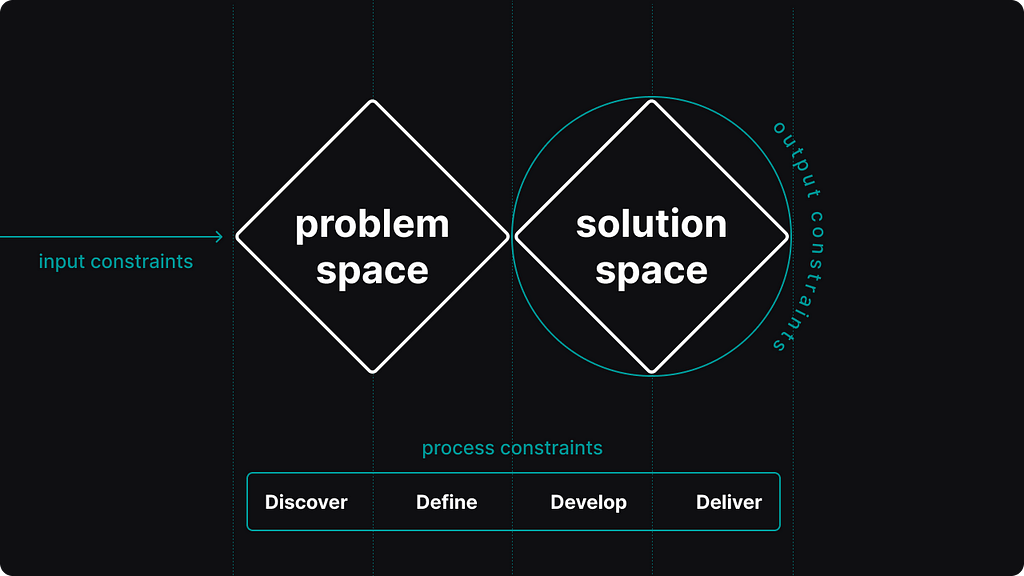
Input constraints
Input constraints limit the resources available to us. These typically include budget, time, equipment, or human resources limitations. A lack of these constraints can often lead to complacency. In contrast, moderate restrictions can frame the task as a challenge, thus stimulating experimentation and risk-taking.
Process constraints
Process constraints establish rules surrounding the workflow. These are usually part of a formal product development process and guidelines on creative methodologies, such as ideation techniques. The degree of autonomy given to a team member is also a process constraint¹⁸.
Such constraints help manage social interactions, coordinate efforts, and encourage knowledge exchange. With constraints on these social dynamics, teams can avoid becoming stuck in an endless cycle of idea generation without progressing to execution.
Output constraints
Output constraints set the boundaries of the solution space, influencing what we even consider as possibilities. These often encompass adherence to standards and regulations or compliance with product requirements and design specifications.
Individuals choose the most obvious or intuitive solution without these constraints rather than exploring innovative alternatives. It is understandable since retrieving something already known is cognitively less taxing than venturing into the unknown. After all, humans are naturally inclined to seek the path of least effort, but in this case, it leads to conventional ideas based on previous experiences.
“The ultimate inspiration is the deadline.” — Nolan Bushnell
Output constraints offer a dual advantage
Output constraints provoke unconventional thinking, encourage the exploration of new ideas, and pose a creative challenge that can motivate individuals. Unlike process and input constraints, output constraints offer a dual advantage. The key, as always, is to maintain a balance that neither stifles creativity nor leads to a lack of focus.
Accessibility is an output constraint
I advocate for accessibility as an essential creative constraint, partially because it functions as an output constraint, offering twice the benefits. In guiding a team toward inventive solutions, accessibility yields a greater return on investment than overused and sometimes stale strategies, such as more design sprints or endless brainstorming sessions.
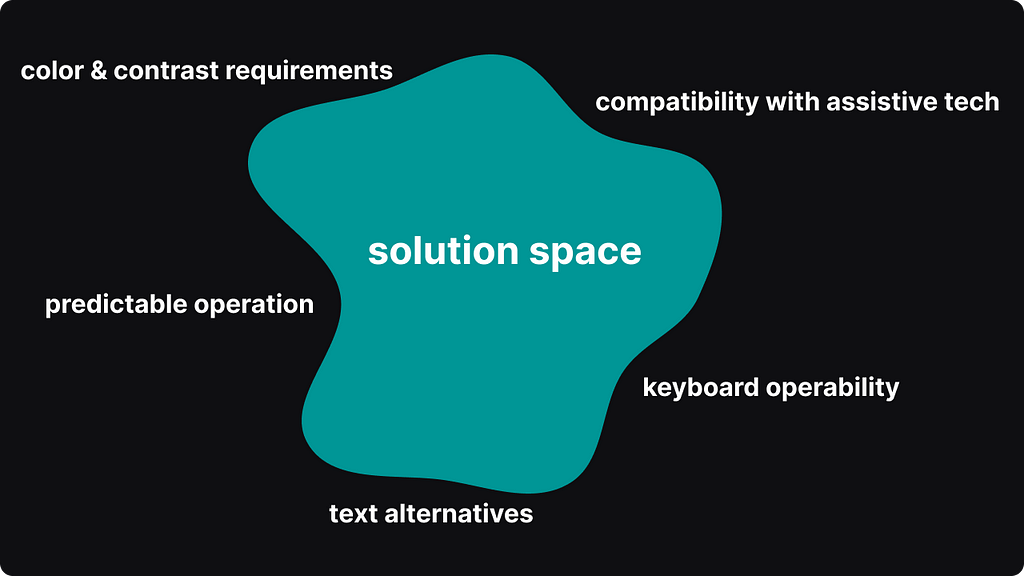
It imposes defined boundaries on the design of digital interfaces. It dictates specific rules regarding color usage and combinations; it requires certain contrast levels for text and UI elements; it prescribes interaction patterns for particular components and provides guidelines for marking up and indicating the state of components¹⁹.
These boundaries constructively shape the design process and enhance usability for a broader range of users, aligning perfectly with the ultimate goal of any conscientious product designer: to create universally usable and appreciated products.
Accessibility is a constraint inherent to the web
Moreover, accessibility is a special constraint. It is a fundamental principle woven into the very fabric of the web. To neglect accessibility is to fail to uphold the inherent promise of the web: to provide a universally accessible, inclusive medium.
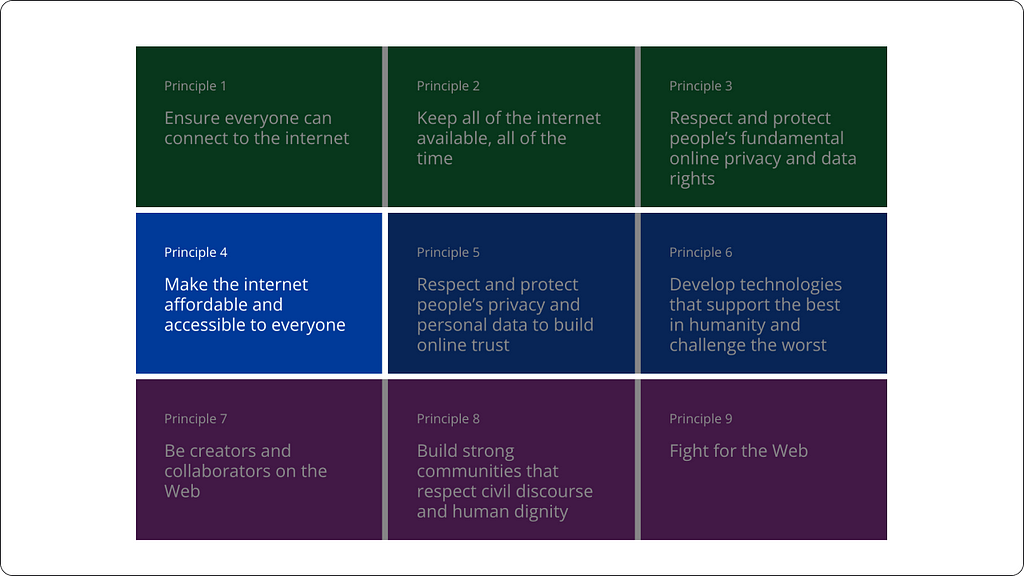
Accessibility is a principle of the medium
“The power of the Web is in its universality. Access by everyone regardless of disability is an essential aspect.” — Tim Berners-Lee
Every medium operates within inherent constraints. The web was designed to bring people together and make knowledge freely available. This vision embodies essential principles that shape the medium — openness, security and privacy, accessibility, and extensibility.
While certain constraints might warrant reconsideration, principles stand firm — they must be embraced rather than dismissed. Web technologies that defied these principles, such as Flash or Adobe Air, didn’t survive in the long run for a reason.
While the principles of the web are a shared responsibility, designers hold a pivotal role in upholding equal access. With around 80% of accessibility barriers stemming from design decisions made early in the product development process, designers have an outsized influence over their product’s accessibility. They are gatekeepers, ensuring inaccessible products are stopped at the source²⁰. For a great argument about this see Accessibility Is a UX and Design Responsibility by Jess Vice.
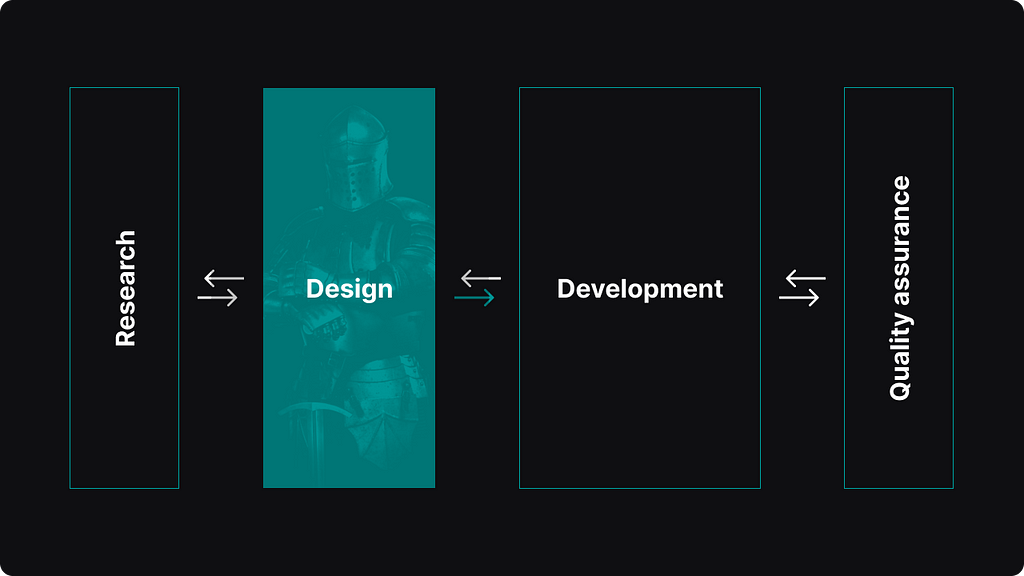
Embracing accessibility offers designers the opportunity not only to ignite their creativity with a meaningful constraint but also to create a better user experience for everyone. In doing so, they uphold the foundational ethos of the web itself.
Could a better constraint exist? It’s hard to imagine one. So let’s embrace it!
Footnotes
[1] “…ensure to persons with disabilities access, on an equal basis with others, to the […] information and communications technologies and systems… — United Nations, CRPD, Article 9.
[2] See a comprehensive, region-by-region overview by Lainey Feingold.
[3] As estimated by the WHO, but given the world’s aging demographic, the relevance of accessibility is set to increase.
[4] No citation is necessary; one can simply refer to the latest news :(
[5] Disability isn’t simply a personal health condition. Rather, it represents a mismatch in human interactions, which could affect any of us, either situationally or temporarily. As such, designs that address these mismatches benefit everyone. For more on this topic, I recommend Microsoft’s Inclusive Design Toolkit or Kat Holmes’ book, ‘Mismatch’.
[6] See an overview from Deque.
[7] As estimated by the Return on Disability Group in their 2020 annual report.
[8] See the 2021 research on accessible communications by Current Global, Magna and IPG Media Lab.
[9] Not as straightforward IRL, but by principle it stands, see an article by Mark Steadman or Adrian Roselli’s Under Engineered Components.
[10] See this 2022 lawsuit recap on Level Access.
[11] Acknowledging that some individuals may have a natural inclination or talent for creative thinking.
[12] For a great overview, see Org Design for Design Orgs by Peter Merholz and Kristin Skinner.
[13] Creativity and Innovation Under Constraints: A Cross-Disciplinary Integrative Review
[14] See the original paper or read the book about it.
[15] Watch an excerpt from the documentary Objectified about the OXO story.
[16] For a spectacular example where this philosophy didn’t pay off, see the story of the Nintendo Virtual Boy.
[17] If you think some constraints just don’t make sense and they are barriers to quality work, having worked with enterprise clients, I wholeheartedly agree… but now we are talking about good constraints :)
[18] And the more autonomy, the better, see Empowered by Marty Cagan and Chris Jones.
[19] I’ll get into more detail about the interplay between accessibility and usability in a future article. Stay tuned.
[20] Given that at least 96% of the web has accessibility barriers, even just prevention would be a significant step.
Think Inside the Box: How Accessibility Shapes Digital Product Design was originally published in UX Collective on Medium, where people are continuing the conversation by highlighting and responding to this story.